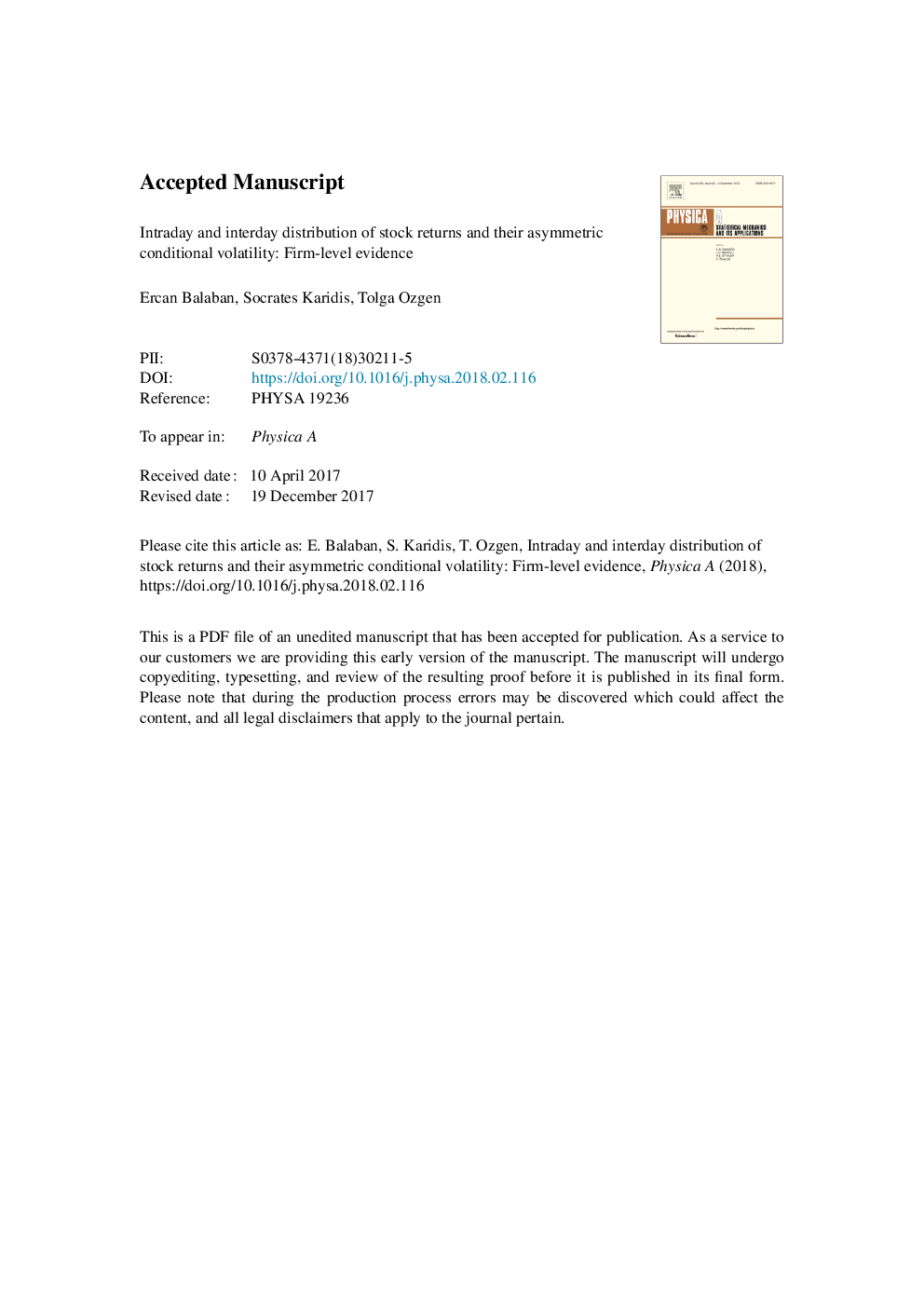| Article ID | Journal | Published Year | Pages | File Type |
|---|---|---|---|---|
| 7375216 | Physica A: Statistical Mechanics and its Applications | 2018 | 30 Pages |
Abstract
This paper is a pioneering effort to jointly analyze the intraday and interday distribution of stock returns and their asymmetric time varying volatility using firm level data from an emerging stock market, namely, the Bourse Istanbul. The joint intraday and interday distribution analysis is based on the two trading sessions with a two-hour lunch break and the trading days of week. The asymmetric time varying volatility is based on the Threshold Generalized Autoregressive Conditional Heteroscedasticity-in-Mean [TGARCH(1,1)-M] model with systematic risk entering the return generating process. This is a unique framework to simultaneously test (i) the weak-form informational efficiency, (ii) the conditional total risk-return relationship and the systematic risk effects, and (iii) volatility persistence and asymmetry in volatility. The firm level intraday data sets are used for the period 1995 to 2015. Firstly, a strong result can be pronounced for a positive return effect for the second trading session of Thursdays followed by the second session of Fridays. The first session of Wednesdays is more associated with a stock price decline. The volatility is the highest in the second session of Mondays. Although the second session of Thursdays sees a volatility increase referring to a positive risk-return relationship, Fridays do not have any significant volatility increase. This can be seen as a true anomaly where we could observe higher returns with lower volatility. Secondly, it can be concluded that only the systematic risk is priced for the great majority of the selected firms. In addition, we cannot observe a significant asymmetry in the volatility in most cases. Finally, it is found that the financial companies have a significantly higher systematic risk than the industrial companies.
Related Topics
Physical Sciences and Engineering
Mathematics
Mathematical Physics
Authors
Ercan Balaban, Tolga Ozgen, Socrates Karidis,
